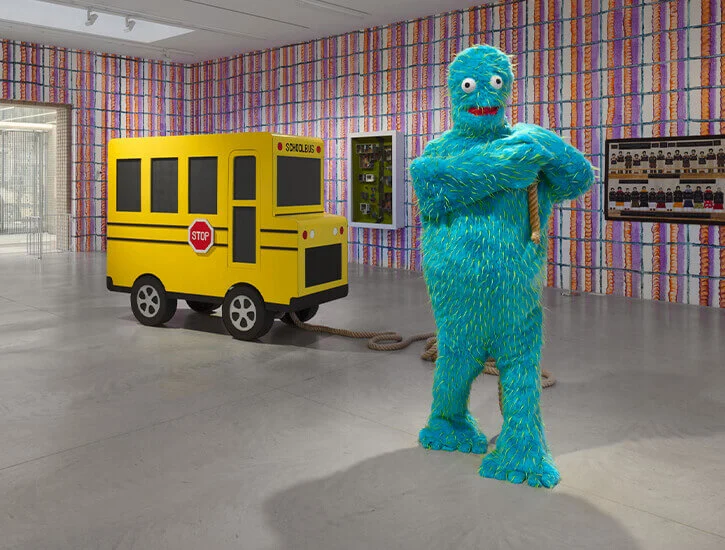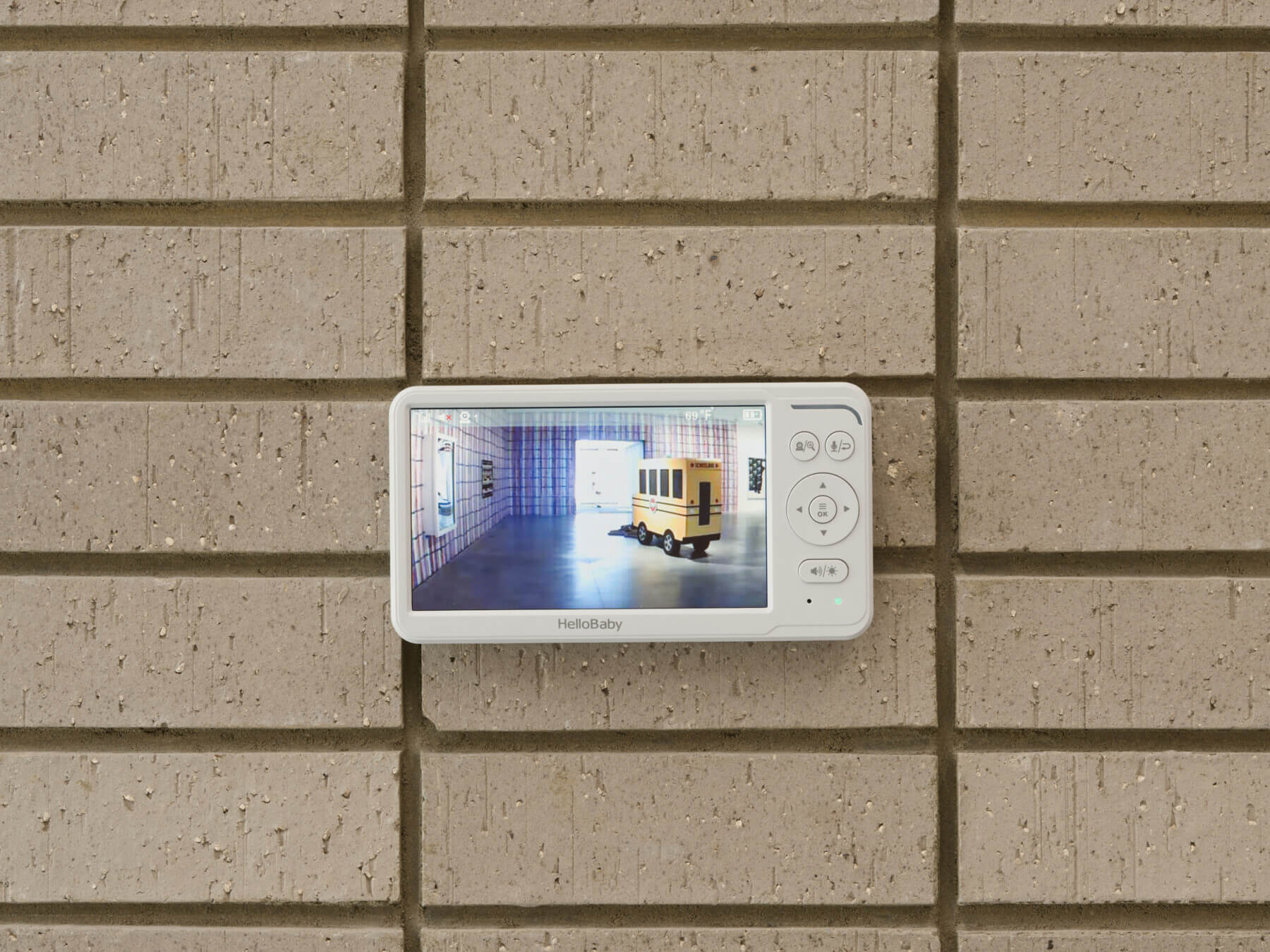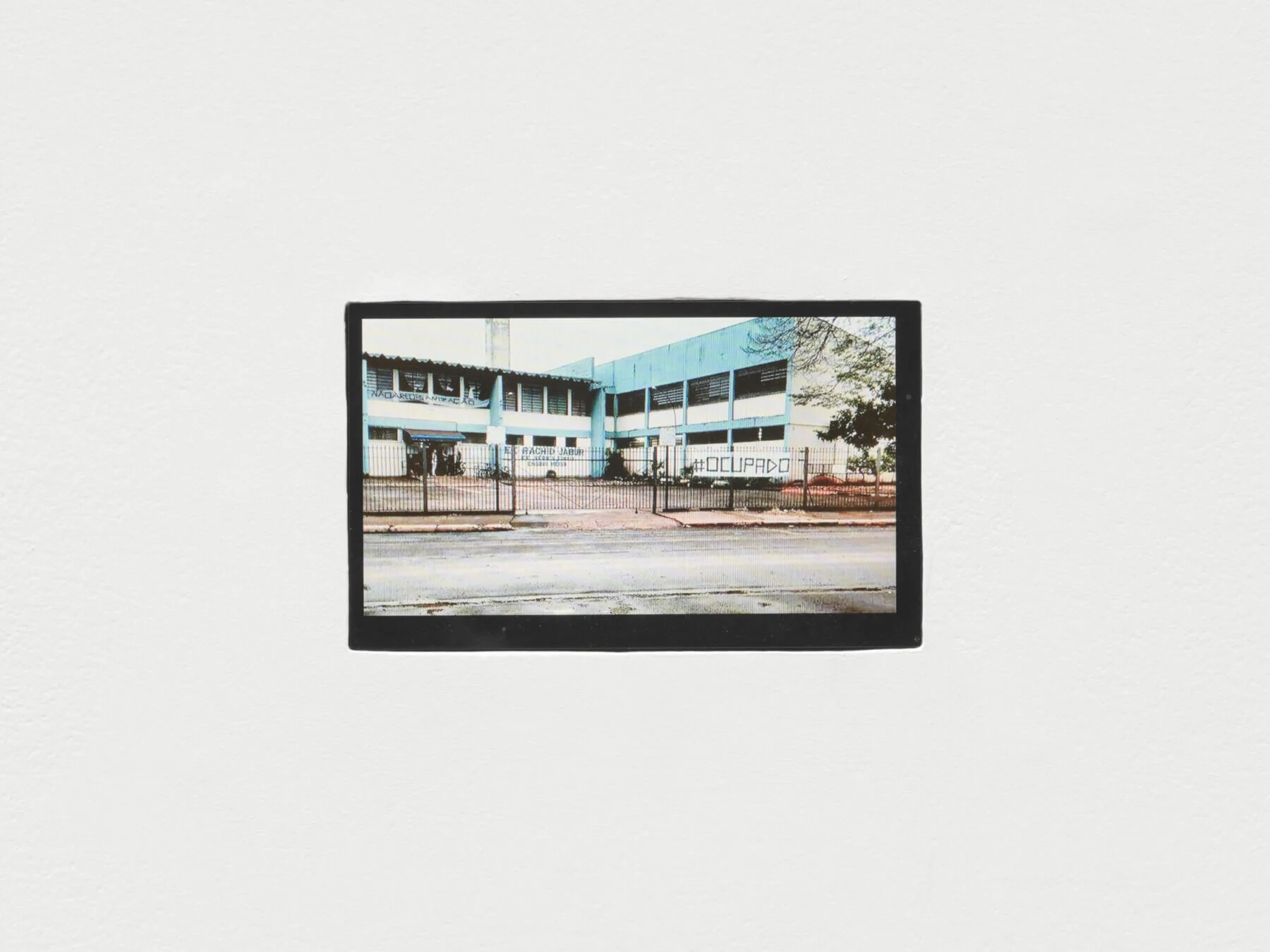Down by the Schoolyard

School is a model for prison. Each morning when students walk onto campus—and likely through a metal detector—they become shadow citizens, with few claims to privacy, property, or even their bodies. Schools today track students’ internet activity, prejudicially profile them, and run regular lockdown drills, all while employing armed police, known as Students Resource Officers, who in 2022 patrolled almost 45 percent of all public K–12 schools across the country.
But going to school has not gotten any safer. There have been more than two thousand school shootings and nearly five hundred related deaths since the 1999 massacre at Columbine High School in Colorado—a campus that happened to be protected by multiple armed guards and a camera system. And those police? They’re often arresting kids for noncriminal activity. According to the New York Civil Liberties Union, officers have booked public high schoolers for “acting boisterous in the hallways” or carrying a cell phone. And recent protests against Israel’s genocide in Gaza have demonstrated that even pupils privileged enough to matriculate at elite private universities are not free from the intense scrutiny and harassment of law enforcement.
Quite the opposite: At Columbia University, where I was a contingent faculty member this spring, campus has transformed into a fortress ostensibly in order to protect Jewish community members (such as myself) from an indeterminate group of “outside agitators.” Yet heightened security made no one I know at Columbia feel safer; indeed, we were menaced when upper administrators greased the wheels of ICE raids in dormitories and illegally evicted activists from university housing. At institutions across the country, the identification of a false bogeyman of the bigoted Palestine supporter has enabled a multipronged system of reconnaissance that standardizes the presence of municipal police departments while expanding private police forces and—at almost two hundred universities in the United States—funneling money into the coffers of Allied Universal, a private security firm that employs ill-trained and underpaid officers. Schools and universities are testing grounds for assaults on personal liberties that will inevitably be outsourced to other arenas of American life under the second Trump administration.
It’s hardly surprising, then, that an excellent education-focused group show at Amant in Brooklyn, On Education, echoes a 2020 and 2021 exhibition at MoMA’s PS1 outpost that focused on the lives of inmates, Marking Time: Art in the Age of Mass Incarceration. The parallels between the two highlight the relentless call-and-response of penal and educational institutions: Prisoners, akin to students, often discover a love for reading or study for a GED while they’re inside. Prisons, like school libraries, regularly ban books, and both embrace emergent technology that can double as means of monitoring and censorship. Many prisons are dispensing with physical volumes in favor of e-readers loaded with basic texts and movies (but nothing rated R!); schools, meanwhile, continue to decenter reading and writing and defund the arts and humanities. Prisons have the right to segregate inmates by race; school districts in red states are aiming to return to a pre-Brown v. Board of Education status quo. Prisons are mountingly privatized; charter schools, funded by state taxes and severe in their discipline and expectations, have been permitted to grow in the public sector thanks to bankrolling by billionaires with their own ideological agendas. The two domains only continue to twist into a tighter braid. So, how to go on educating?

On Education takes up all three of Amant’s buildings between Grand and Maujer Streets in East Williamsburg, which the nonprofit refers to, fittingly, as a campus. The exhibition encompasses sculptures, paintings, videos, photographs, ephemera, sound installations, and environmental readymades. Enter the main edifice on Grand and you’re faced with small wooden cubbies fashioned by Carissa Rodriguez, an evocation of a daycare void of winter coats and lunch boxes. The sculpture’s odd emptiness helps it skirt cuteness. Rodriguez undercuts nostalgia to reveal a stark, exposed system of storage pods that confuses art and function, leaving us viewers unsure, like children.
Swedish artist Ghislaine Leung installs toddler gates in two of the buildings that visitors may elect to leave open or closed, allowing them to exercise illusory control over the gallery. She hangs a baby monitor near the main entrance, which feeds a screen elsewhere. Guests can spy on unaware peers—if they even realize that this console is an artwork and not Amant’s own infrastructure, revealing just how commonplace and chillingly unoffensive surveillance devices have become. Nearby, Brad Kronz’s eerie installation I had all the tools even at a young age (2014) includes folded cafeteria furniture and a half-covered slide projector, located in a dimmed gallery space that makes it seem as though gallerygoers have wandered in afterhours. Swathed in darkness, I felt like a curious explorer, not a criminal trespasser—perhaps an indication of the relatively gentle educational experiences I had as a kid.
Contorted Virco chairs, made by the New York-based artist sgp, recontextualize this molded plastic seat that has been native to classrooms for generations, not as a marvel of quotidian design but a fixture of anxiety dreams endured long after graduation. The artist weighs down her sculptures’ legs with wax and steel and juxtaposes them with concrete rubble—more a vision of a paralyzed learner than a nostalgic summons of Virco’s ubiquity and tactility.
Gelatin silver prints by legendary journalist Jacob Riis and pioneering photographer and filmmaker Gordon Parks serve as the show’s twin epigraphs. Riis renders a crowded Lower East Side classroom in 1902, while Parks photographs his Radio Technicians’ Class, Daytona Beach, Florida (1943) from behind the shoulder of an instructor as he presides over a classroom of baby-faced black radio operators training for the Allied campaign during World War II. The agitating of turn-of-the-century reformers and the seismic shift of war are both germs of modern education in the United States, yet the prerogative of the American war machine inevitably crowds out Riis’ dreams. Surveillance, and its co-optation of horrors such as Columbine, is a way of making the militarization of society seem necessary, an unremarkable fact of daily life.

A pamphlet that accompanies On Education notes that the curators wish to separate their show from the “participatory and discussion-based models” that artists have favored when tackling the subject of education in recent years. Yet a show about education can hardly ignore the importance of participation, and in spite of what it claims about itself, On Education doesn’t. Many of the works on display fit into the broader sphere of social practice art, with its blend of object-making and activism. This strain sprouted from the 1970s New Left’s intersectionality and charted a lineage of conceptualism and progressive politics during the neoliberal era that followed, guided by a belief that engaging with people could form the material of an artwork.
On Education includes a range of social practice artists who base their output on communities’ active cooperation. Painter Philip Wiegard collaborates with both teenagers from a local school and amateurs he met by giving painting lessons on YouTube to create curlicued and patterned wallpaper that adorns a couple of gallery walls. Baby Group (2024), a marvelous video by filmmaker and researcher Emanuel Almborg, logs an experiment in which the director placed infants in a room to see how they communicate unsupervised. Almborg cuts through the preciousness of his first-person lens with shots of parents watching from out of sight, drawing out a queasy undertone from beneath benign observation.
Elsewhere, vitrines burst with work by conceptualist Jef Geys: a local Belgian newspaper that he turned into his own creative dispatch, Kempens Informatieblad, and pages from a book about classes he taught for thirty years in the northern municipality of Balen, which incorporated conceptual art modules. Across the room are photographs, posters, and student responses from the Bruce High Quality Foundation University, originally a collective of Cooper Union alumni who traveled the country during the summer of 2011 in a limo painted like a school bus, holding workshops that they advertised as a free MFA curriculum. Whatever On Education insists, its lifeblood is social practice art. Social practice artists, by concentrating on people, cut against dehumanizing trends that have turned education into an opportunity to develop security technology. And on a methodological level, those operating in this tradition have the potential to do something beyond making art about education: they can frame education as art.
Other pieces drag education into the opaque box of the home. Paul McCarthy and Mike Kelly’s duo of videos, Tyranny/Family Soup (1987), portrays abuse through improvised scenes in which the filmmakers play father and son, suggesting the domestic terrors that can bookend any student’s school day—that have, for so many students, made school a refuge. Laurie Simmons’s wall-mounted dollhouse Deep Photos (Sparkle House) (2022) and her suburban street shown in cross-section Deep Photos (Cowboy Town) (2021) are stand-out instances of the veteran artist’s recent oeuvre. The former is an idealized mid-century domicile with a single occupant, a figurine girl sprawled on her bed with a phone pressed to her chin.
I wished that Amant featured more work by those whose youth might give them a different perspective on the subject matter (the youngest inclusion, Frank Baniwa, was born in 1991), but a curation that declines to fetishize talent fresh out of MFA programs is refreshing—embracing such prestige would be unfortunate considering the show challenges our glitziest impressions of school. Mixed-media oils by thirty-nine-year-old budding art star Sable Elyse Smith are potent, apt: Smith blows up state-produced coloring books, which penitentiaries often distribute to children in visitation rooms. “People have to see the judge when they break the law,” reads one of these torqued bits of diversion and indoctrination, each word chaotically shaded in orange and indigo, warning youngsters about crime’s repercussions. Some American children, Smith suggests, are born guilty and must continually prove their innocence.

On Education routes political commentaries into an experience shared by all of humanity: the helplessness of childhood. One of several bright, cartoon-influenced paintings by artist and longtime queer activist Michela Griffo depicts a young girl who looks up in shock while an adult hand grabs her arm. “I would like to have had a childhood that I did not have to spend the rest of my life recovering from,” reads a speech bubble in this gutting eleven-by-eleven-inch watercolor. The line seems to refer to a grim reality off-frame, yet the humane imagination of On Education makes us wonder: Is the arm, its faceless dominance and implied violence, symbolic of an authority so oppressive that anyone raised under it must spend adulthood emotionally recuperating? Is powerlessness itself a cruel and unusual byproduct of growing up?
The empathy of On Education is only abetted by the show’s omnivorousness. There are many kinds of pedagogy and means of making art, and innumerable possible reflections of humans healing from their upbringings. The show asks its audience to commune with different flavors of hurt, but makes clear that any true fix must be systemic. Just as prison abolitionists believe in reducing crime by addressing root causes, rather than castigating individuals, On Education looks at learning as a mutable process that society has trapped in imperfect molds. American education’s present is a corrupted circumstance, not a necessary evil, a knowledge that allows the brave and persistent to push for change: during the fiery summer of 2020 in Chicago, the nation’s fourth largest school district, a student coalition called #CopsOutCPS pressured Local School Councils to remove police from schools, leading to a 61 percent decrease in the presence of Student Resource Officers between 2019 and 2024 and a 69 percent drop in funding for school police during the same period. There’s more labor to be done; still, the remarkable success of this campaign would have been inconceivable just a couple of years prior.
The most prescient art on view in On Education is not explicitly about how to educate students, but how they can fight for their education. Brazilian artist Graziela Kunsch exhibits a spare photographic slideshow that examines an action by the student organization O Mal Educado, who occupied São Paolo school buildings in 2015 and 2016 after the government ordered their shuttering. These protestors took considerable risks; the police response was fierce. Kunsch chronicles dwindling boxes of Tang and sticks of butter, barricades of desks and ordinary chores, capturing civil disobedience in a moment of austerity and resourcefulness. She conveys the fleeting harmony of the demonstration, not the tumult of the cops’ riposte—consequently, her series burns slowly with hope. Mal Educado has left a breadcrumb trail for those to come, a means of providing for their progeny in the struggle. These would-be students, denied their right to an education, become their own teachers.